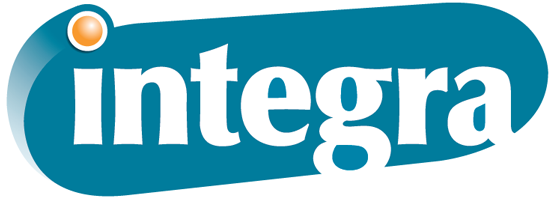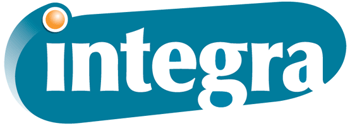5 Factors That Impact the Cost of Your Custom Printed Shirts
September 15th, 2023 | 6 min read

“Hey, what should I wear tomorrow?”
A text I received a few years back as I was preparing for a company trade show. To be honest, apparel was the last thing on my mind at the time … Until I heard that telltale ding of a colleague’s designated ringtone. I sure was thinking about apparel now.
I remembered attending trade shows and being drawn overwhelmingly more readily to the tables with a community vibe, where everyone was wearing the same color and logo to represent what it was they had to offer.
Why hadn’t I thought about getting us matching company t-shirts? The event was two weeks away, and the only experience I had with printed t-shirts were Ocean City, MD shirts from the boardwalk when I was in my teens and thought paying $35 for a shirt with an instantly peeling locational word stamped across the front was totally worth it. But now I had a business to run, people to answer to, a budget to obey.
Attempting to tackle this all on my own wasn’t an easy feat. If you’re in a similar situation, be it for a trade show experience, your company’s holiday party, a charity race or a team-building event, you may as well benefit from the blood, sweat and tears — and by “blood, sweat and tears” I mean “caffeine and late-night hours” — I put into researching the cost of printed t-shirts and what factors would affect those prices. Let’s dive in and make sure you can soon decide what kind of printed shirts are the best option for you!
Cost Factor 1: Style of Your Blank Shirts Before Print
One of the most obvious factors that will change the price of your final printed product is what you want to print on. In more technical terms, what kind of substrate or blank will your starting point be?
The most cost-effective solution, bulk cotton t-shirts with one single-color imprint each, can stay as low as $5 per shirt. On the other hand, if the result should be your entire company in name-brand jackets with several multi-color imprints each, you’ll see higher material costs, which can drive the overall rate all the way up to $250 per article. Now, that’s an extremely expensive jacket and we’ve literally never seen one go that high, but it gives you an idea of what’s possible.
More likely, you’ll see three categories:
- Low-cost: Generic t-shirts, especially with individual imprints and bulk quantities.
- Medium-cost: Fancier shirts. Think polos, hoodies, half zips and quarter zips, usually at the generic brand level. They have more material, and that material is often thicker. Bulk quantities will save you money per piece, as will single decorations rather than multiple.
- High-cost: Jackets, coats and brand name versions of our medium-cost category.
Brand Choice on Your Blanks
Next, do you want the printed apparel to be brand-name, like Nike, Adidas or Under Armour? You can save quite a bit of money bypassing the Nike swoosh, for example, dodging a markup of 25 percent or more. If you love the branding or know your employees will appreciate a well-known brand name more, you should expect to pay a premium. On the flip side, if you’re working on a strict budget, you may want to go with a non-brand-name shirt with comparable quality.
Cost Factor 2: The Fabric of Your Printed Shirts
Consider what the main function of your shirts will be and how much you’d like to spend. Will your employees or customers appreciate a soft texture, or do they value performance fabric above all else? And are you willing to pay extra for the features you have in mind?
Some of the most common fabric options for printed apparel include:
- $ Cotton: As a mainstay in t-shirt fabrics, cotton is the lowest-cost material to print onto. It’s comfortable, breathable and will keep the cost down. It does well in washing machines and dryers, but it will not typically come out of the dryer free of wrinkles. Not the best fit if you’re seeking a good marathon day fabric.
- $$ Ringspun cotton: Sharing many of the same benefits of regular cotton, ringspun cotton comes in at a higher price but offers a lighter, cozier feeling thanks to thinner, softer fiber. Again, not a great fit for physical activity, as it tends to hold moisture.
- $$$ Polyester blend: While 100% polyester shirts cost more than cotton, they’re a favorite for situations requiring activewear and reliable wicking properties. Because it’s super wicking (meaning it won’t hold moisture), it’s great for sporting events, races, exercise, cruises and the like. Not necessary for casual events with little physical activity, plus heat pressing can cause these fibers to melt.
- $$ Cotton/polyester blend: This blend of the two most common t-shirt materials — usually a 50/50 split — offers benefits from both camps. It has some wicking properties, but cotton keeps the price below that of 100% polyester. If you want full wicking or the lowest cost, the blend isn’t for you.
- $$$ Tri-blend of cotton, polyester and rayon: A more recent addition to the lineup, tri-blend shirts also provide a combination of perks, but with a premium price tag. Rayon, a semi-synthetic fabric, can make the shirt feel as soft as silk, but its addition hikes up the price per unit.
Cotton shirts come in significantly more base colors than the other options, but you’ll have a selection to choose from no matter what material type you decide on. Be sure to communicate your material and color preferences as early as possible so your print manager can check stock and secure blank shirts for the print job.
When you’re in the process of selecting blanks, including brand, sizing, fit, style and color, lean on your print management company to walk you through your options. They should be willing to make suggestions along the way based on your plans and available stock.
Cost Factor 3: Apparel Printing Method
When you’re making decisions on product type, material, color and design, you’ll want to keep the two primary printing methods for printed shirts top of mind:
- Screen printing: With screenprinting, the quantity of shirts being printed as well as the number of colors in each design will drive the price up or down. Bulk orders are generally done at a lower price point with screen printing over digital printing.The more shirts you print at once, the less you’ll pay per shirt. The more colors you include in each impression, on the other hand, the more you’ll pay.
Note: Printers typically will not screen print shirts in quantities under 24 without a significant uptick in price. That said, 24 screen printed cotton t-shirts would cost about $10.50 per shirt, while 96 would cost about $9.35 per shirt. Prices vary with individual selections. - Digital printing: This less common but still immensely popular type of printing costs more upfront for large orders over about 24 pieces, but you’ll be able to customize and select colors significantly more freely. The ink will be incorporated into the fabric of your shirt. You’ll pay more overall, but you can print in smaller quantities without a penalty, and you’ll have lower-cost access to a broader array of colors through CMYK printing.
Note: In contrast to screen printing, 24 shirts digitally printed would cost about $18.50 per shirt, while 96 would cost about $14.50 per shirt. Prices vary with individual selections.
Cost Factor 4: Number of Decoration Locations, or Impressions, on Each Shirt
The number of colors you include in your final printed design will change the price significantly, but even more critical is the number of spots needing to be printed on each product.
The equation has more to do with time in this case, as a shirt with printed content on the front and back will need to go through the press twice, doubling the required effort and press time.
Throw in some sleeve imprints, or graphics printed on one arm of each shirt, and you’ll see a significant increase that aligns with a third trip through the press — and so on and so forth.
Cost Factor 5: Lead Time on Your Printed Shirt Order
The more lead time you can give a print company with your apparel project, the better. In other words, do your best to place each order with your print management company as soon as you know you need it, rather than waiting until the proverbial last minute.
With more advanced notice, you’ll avoid paying extra courier fees for getting blanks to the decorator and getting the printed shirts to your company or event site. Generally speaking, you’ll want to give your printer a minimum of three weeks to work on and deliver your completed shirts.
If you end up in the same situation I did, with very little lead time and a big event on the uncomfortably close horizon, try to find a printer willing to work with you to provide expedited shipping and a quick turnaround. It’ll cost more in the long run, but you can get your shirts on time.
Decide What Kind of Custom Printed Shirts Are Right for You and Your Budget
Maybe you’re in the same situation I was in and wishing you’d thought about your apparel sooner. With that position arrives the realization that bulk printed apparel orders come with an oftentimes overwhelming number of choices, factors and price-driving features.
It’s almost impossible to nail down an exact price per unit without making a range of selections and considering your lead time. That said, you should now be able to select at least the majority of your features and specs based on the characteristics you prefer and whether you’re expecting a low, average or high price point.
The next question you might be asking yourself is, “How do I know what company to work with?” Or maybe you’re even wondering, “What is it like to work with Integra Graphics Synergy?”
Whomever you end up working with for this project, we wish you the best of luck finding the perfect fit — in company and in shirt. Keep the above five factors in mind as you take the next step in your custom printed shirt journey, and you should find yourself in the perfect branded apparel in no time. Just don’t forget to have fun with the process!



